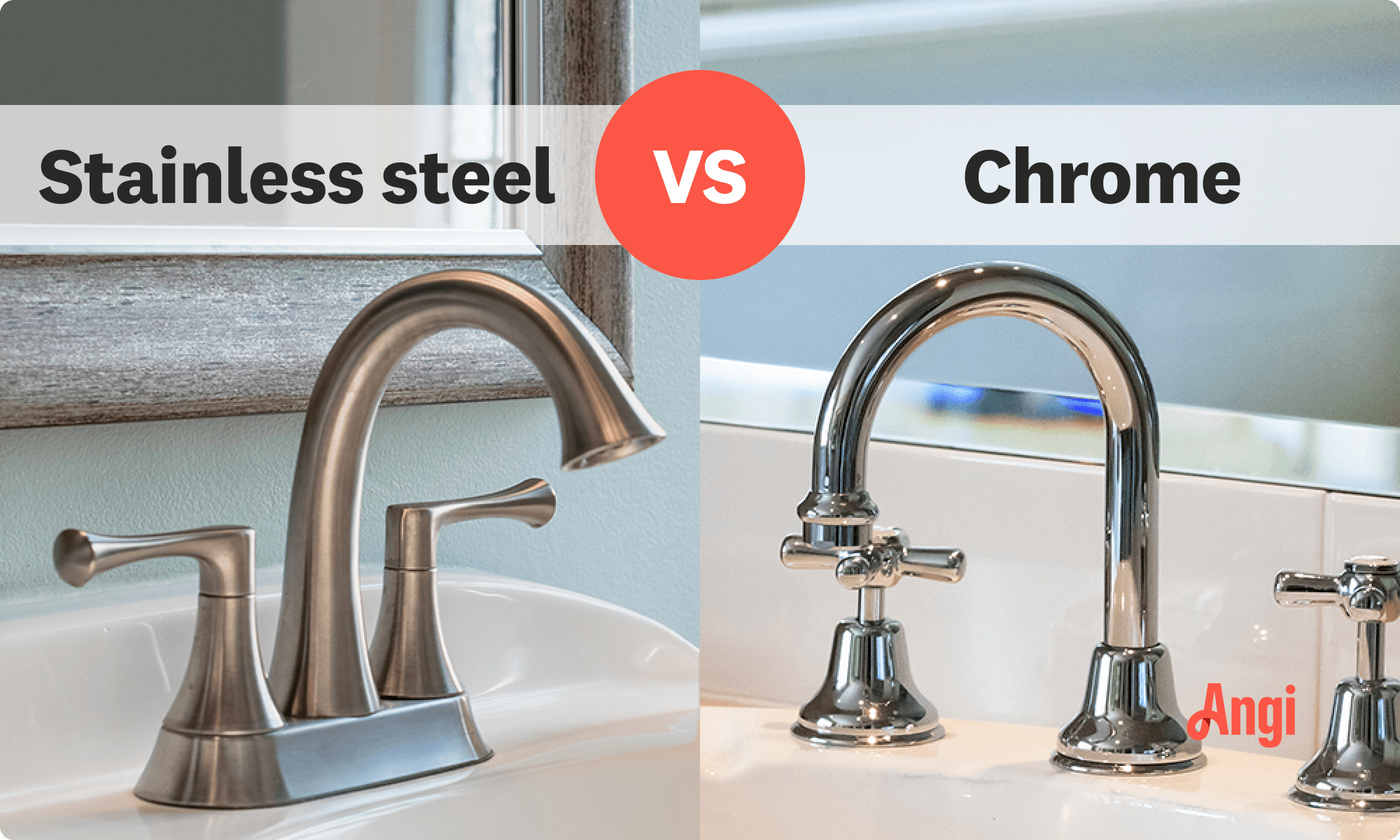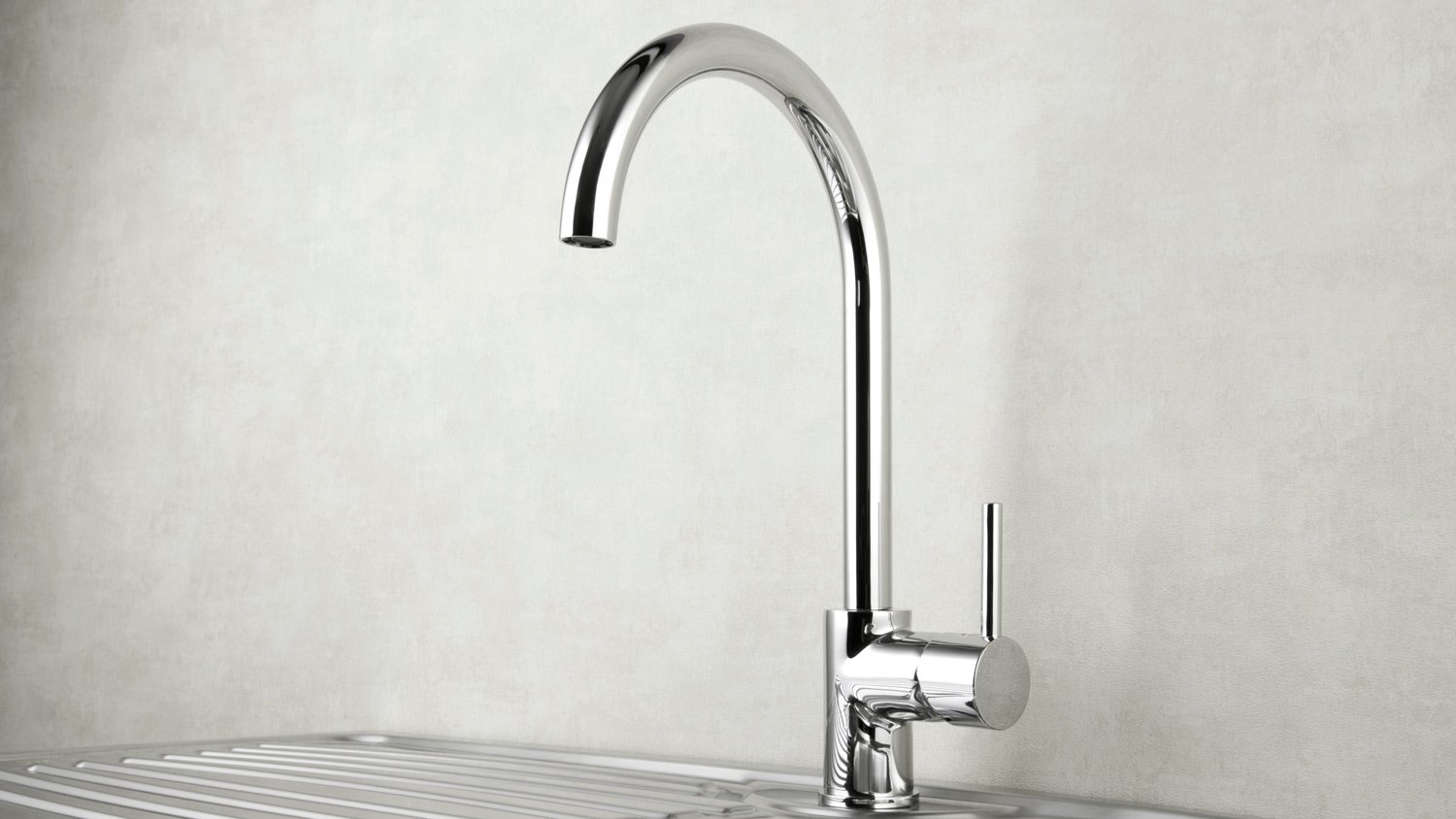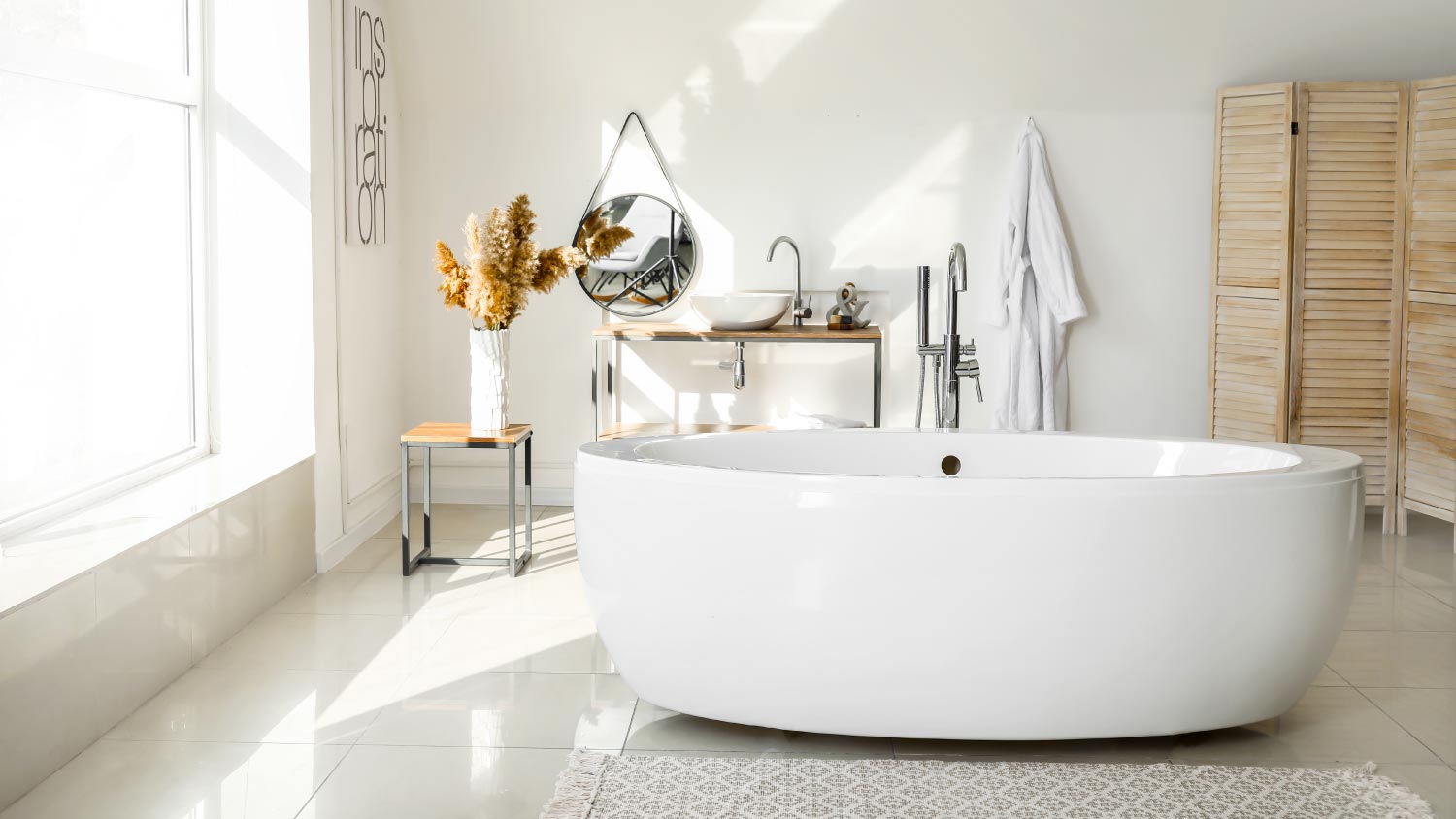
An updated bathtub can give a bathroom a whole new look. Find out how much it costs to replace a bathtub, including prices by type and labor costs.
Pick the perfect faucet finish by putting shiny competitors head-to-head


Chrome faucets are affordable, come in many styles, and have a shiny, smooth finish.
Stainless steel faucets provide excellent durability with a sleek, modern appearance.
Chrome faucets are more easily damaged and prone to damage from harsh cleaners.
Stainless steel faucets come in fewer design options but can last decades if cared for correctly.
Faucets are high-use fixtures that need a combination of functionality and aesthetics. Chrome and stainless steel are popular faucet materials with strengths and weaknesses that could make one a better fit for your sink. One offers high shine and a budget-friendly price, while the other brings a modern aesthetic and durability. Here’s a side-by-side comparison of chrome and stainless steel faucets to help you decide which complements your style.
Chromium plate, better known as chrome, is a protective and decorative finish used on everything from car bumpers to kitchen and bathroom fixtures. It’s easy to clean, though harsh cleaners can damage its surface. Chrome faucets are cost-effective and often have a mirror-like, shiny finish.
Stainless steel’s durability is its standout feature, though the added strength comes with a higher price. These faucets have a muted shine and come in various finishes with different tones. Upgrading to either of these materials, whether you do it yourself or hire a local faucet installer to transform your sink, can give your space an instant glow-up.


Chrome faucets are covered in chromium plating through an electroplating process. Chrome’s timeless, shiny finish is one of the most attractive characteristics. It can look at home in a cottage-style bathroom or a minimalist kitchen. The shine has some downsides, but you can choose a satin finish if it’s not for you. However, satin gives faucets and fixtures a more modern look that doesn’t complement every style the way shiny chrome can.
| Pros | Cons |
|---|---|
| High shine (satin finishes also available) | Shows water spots |
| Cost-effective | Can get nicked or scratched |
| Comes in various styles | Easily shows fingerprints |
| Easy to clean |
Best for:
Those on a budget
Those who want a wide range of style choices
Those who want simple faucet maintenance
Chrome’s mirror-like finish is one of its greatest and most desired features, though all faucet finishes have pros and cons. That shine can be applied to faucets in almost any style, creating chrome faucets in a wide range of modern, classic, and contemporary choices. You’ll also find satin finishes for a more fingerprint-resistant, modern aesthetic.
Chrome is also easy to clean—regularly wiping it down can keep a chrome faucet bright and shiny. You don’t need fancy cleaners, but stick to gentle ones to keep a chrome faucet clean.
Switching out the hardware can make a bathroom vanity look new. When choosing knobs and pulls, don’t forget to choose colors and finishes that complement your new fixtures. Nickel and black are universal choices, or go with a slightly different finish in a unique shape.
On the downside, chrome shows water spots, especially if you have hard water, which contributes to faster tarnishing. Chrome can also easily show fingerprints, which can be problematic in high-use areas. You can prevent water spots, tarnishing, and fingerprints by wiping down the faucet after it gets wet. However, how long a faucet lasts depends on several factors, including the hardness of the water and how well you maintain it.
Finally, chrome can show nicks and scratches more easily than stainless steel. Avoid abrasive scrub brushes and harsh cleaners.

Stainless steel is in more than just faucets—this material is in everything from large and small appliances to knobs and handles. It’s sought after for kitchen and bathroom faucets for several reasons, including a modern look and minimalist design. It doesn’t come in as many design options as chrome, but it’s durable and easy to clean, making it a great choice for high-traffic bathrooms and kitchens.
| Pros | Cons |
|---|---|
Best for:
Durability and longevity
High-use kitchens and bathrooms
When roomy budgets allow for it
Stainless steel’s strength lies at the heart of its faucet benefits. It resists denting from washing dishes or younger family members who might not be as gentle as you may want. Stainless steel can withstand hard water and resists water spots better than chrome. However, you’ll still need to regularly wipe down a stainless steel faucet to prevent water spots.
All that fingerprint and water spot resistance makes cleaning stainless steel easy. While you might still want to be careful with your cleaners, stainless steel is much less finicky than chrome. A standard stainless steel cleaner and a quick wipe-down are all you need to keep it looking new.
Finally, stainless steel’s modern look complements new kitchen and bathroom designs. It’s made in several finishes, all of which are more matte than glossy chrome. The finishes may include slightly different tones for a few more color choices.
While stainless steel looks modern and sleek, it doesn’t have the high shine some homeowners prize. These faucets are also more expensive than other materials, so they can bump up the cost of replacing a bathroom faucet. The added cost buys more durability, but if your budget is tight, you may decide to wait for this upgrade.
In a strict comparison between chrome and stainless steel, stainless steel doesn’t come in as many style choices, which can limit your options. However, lack of choices continues to be less and less of an issue as brands roll out new stainless steel faucets each year.
We compare chrome versus stainless steel faucets so you can weigh and measure their strengths and weaknesses. In some categories, there’s a clear winner. You’ll have to decide which material fits your lifestyle and design aesthetic.
Aesthetic largely depends on personal preference. Some homeowners prefer chrome’s high shine, while others want the industrial look of stainless steel. If you want to see your reflection, chrome is your best bet, but be ready for extra drying and wiping to maintain that shine. Stainless steel doesn’t have the same high shine, but its sleek, minimal appearance can add the perfect touch to a modern kitchen or bathroom.
Stainless steel faucets can last decades without rusting, pitting, or losing their original finish. Chrome simply doesn’t have that kind of longevity. While you need to be conscious of the cleaning products you use on either of these materials, stainless steel will withstand more wear and tear than chrome.
Chrome and stainless steel are both fairly easy to maintain. However, chrome is more susceptible to damage from harsh cleaners and abrasives. It’s also more vulnerable to fingerprints and water spots, though you might see both on stainless steel. In the end, stainless steel will look cleaner longer and stand up to use better than chrome.
Chrome faucets are budget-friendly, making them an excellent option for those building or renovating on a small budget. You can always start with chrome and update later on when you’ve saved for a stainless steel upgrade. Stainless steel costs more upfront, but if you have the budget, your investment should stay with you longer than a chrome faucet.
From getting an estimate to ordering flooring to installation, Randolph and Mortimer was outstanding. This was a large installation in a commercial building but they worked with us to install the flooring quickly and around our scheduled open hours. The flooring installers were efficient and...
Space Air Duct Cleaning did an amazing job. Our air feels fresher, and the technicians were professional and efficient. Highly recommend!
Every single individual with Basement Kings is friendly, courteous, respectful and hardworking. Each of the crew members that worked to finish our basement was extremely knowledgeable and I enjoyed getting to know each of them. The quality of work is outstanding and every effort is made to...
Excellent service. Technician was extremely professional and courteous.
I know David Vaughn ( the owner ) personally and knew that he would be very thorough in his inspection of a house I was interested in purchasing. He was exactly that and I will hire him for the next house I need an Inspection for.. Very professional and on time.
Responded quickly to an emergency situation. Willing to work with you financially very clean and efficient work. Would hire them and recommend them always.
Top ten of the guys I've ever contracted to do work! Brian was super helpful and understanding of the things we needed done. He got it done under budget and did more than we ever expected! They show up and get it done and it's super easy to communicate with him and the guys even...
They were absolutely amazing. Finished in just under an hour and were so helpful and kind. Will definitely recommend to all my friends and use them again. Thanks!
They were professional, efficient, careful, and went above and beyond what I asked them to do. He even fixed the sheet music stand on my piano by adding a screw that was missing. I will definitely use them again for any future moves and would highly recommend them for anyone looking for movers.
Terry was very knowledgeable and dedicated: He made sure my sprinkler system was up and working properly even though the temperature that day was close to 100 degrees. I appreciate the kindness and dedication and will use him again.
From average costs to expert advice, get all the answers you need to get your job done.

An updated bathtub can give a bathroom a whole new look. Find out how much it costs to replace a bathtub, including prices by type and labor costs.

A bump-out addition is right for you if you want to add extra space to your home without adding a new room. Learn about the different bump-out addition costs.

Remodeling your bathroom can add significant value to your home. Your bathroom remodel cost in Atlanta, GA will depend on size, fixtures, materials, labor, and other factors.

An updated bathtub can give a bathroom a whole new look. Find out how much it costs to replace a bathtub in Columbus, OH, including prices by type and labor costs.

Mirror, mirror, on the wall—how do I hang you so you won’t fall? Get tips and tricks for how to hang a vanity mirror and keep your reflection straight.

When planning a bathroom remodel for older adults, start by evaluating the mobility needs of the specific individuals residing in the home.